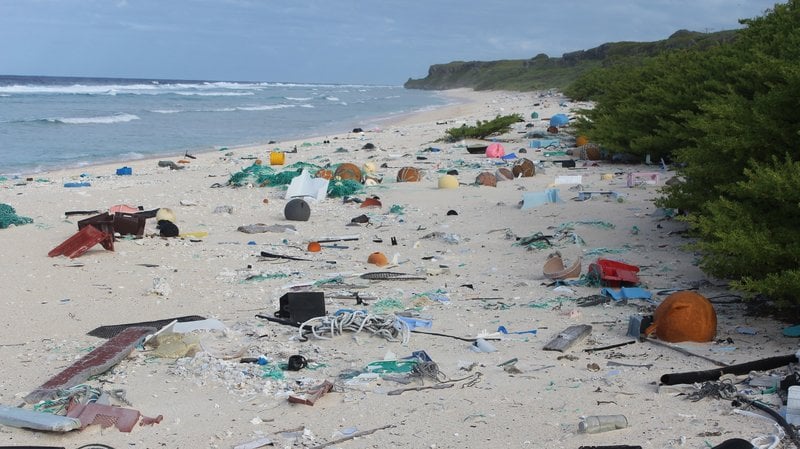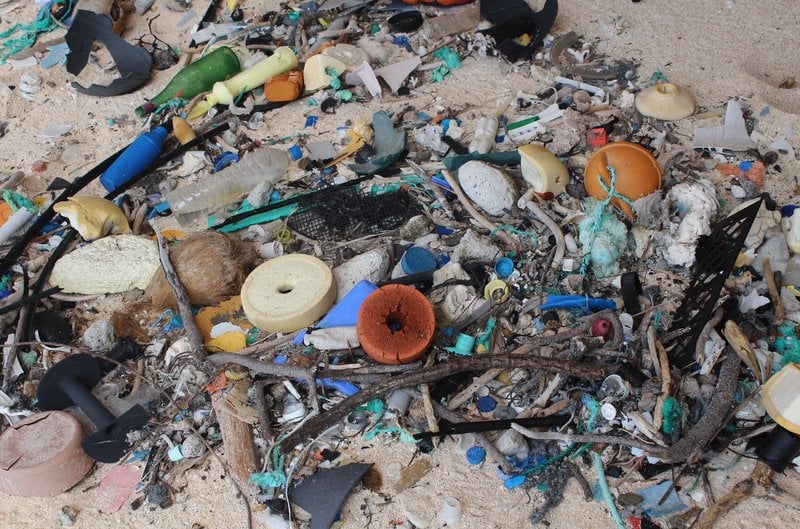
Henderson Island in the south Pacific Ocean has always been known for its remarkable biological diversity and untouched ecology. Now, the remote UNESCO World Heritage site that lies 3,100 miles (5,000 km) from the closest human settlement, can also lay claim to being one of the most polluted places on Earth.
Jennifer Lavers, a researcher from the University of Tasmania’s Institute for Marine and Antarctic Studies who has been studying the coral atoll for a few years, says the tiny, 14.4 square miles (37.3 square kilometers), island is home to over 38 million pieces of waste. According to the scientist, this is the “highest density of anthropogenic waste recorded anywhere in the world, with 99.8 percent of the pollution plastic.”

The amount of trash is surprising given that the island, the largest of the group of four Pitcairn volcanic islands, has no residents and is visited by scientists only once or twice every decade. However, as it turns out, humans do not need to be physically present to pollute an area. In this case, the trash is brought in by the South Pacific Gyre, an ocean current that sends garbage bobbing through the sea to Henderson. The primary offenders are fishing-related debris, like lines and nets, and single-use household items.
What’s even worse is that the unsightly rubbish scattered across the island’s sandy beaches is just the tip of the iceberg. According to the researchers, over 68% of the junk is buried under the sand. This means their estimates, based on the trash found up to 10 centimeters below the sand, may be underestimating the full extent of the pollution.

Besides being aesthetically unpleasing, the waste is also harmful to the island’s wildlife. Lavers and study co-author Alexander Bond discovered hermit crabs taking refuge in toxic cosmetic jars, and sea turtles, that come to the island to lay eggs, entangled inside fishing lines. The trash is also harmful to seabirds and fish that mistake the colorful plastic pieces for food.
An analysis of a 32-foot patch of the beach revealed that much of the trash originated from China, Japan, and Chile. However, Lavers and Bond, who published their findings in the journal Proceedings of the National Academy of Sciences, on April 7, state, “Across the board, no country got a free pass on this – we found bottles from Germany, containers from Canada, I think it was a fishing crate from New Zealand. What that says is we all have a responsibility in this, and we have to sit up and pay attention to that.”

Unfortunately, Henderson’s debris collection which equals just 1.98 seconds of the world’s annual production of plastic, is a mere blip in the amount of the nondegradable material that is carelessly tossed out every day. According to experts, over 8 million tons of plastic waste ends up in our landfills and oceans each year.
Environmentalists like Boyan Slat, who founded The Ocean Cleanup in 2011 after discovering “more bags than fish” while diving in Greece, are trying to clean up the mess. However, his efforts will only make a difference if we all pitch in by avoiding plastic altogether or reusing and recycling when that is not possible. Unless we find ways to reverse the situation, this ever increasing pollution poses a serious risk to the health of our planet and all its residents, including humans.
Resources: Guardian.co.uk, NPR.org, treehugger.com